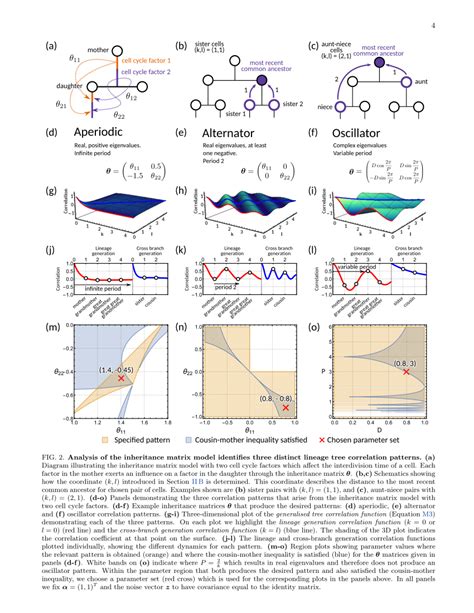Unveiling the Chronological Tapestry with Precision and Clarity

The intricate tapestry of time holds the key to understanding the sequence of events that shape our world. By meticulously analyzing time-correlations, researchers have unlocked a powerful tool to unravel the chronological order of phenomena, providing invaluable insights into historical events, scientific processes, and countless other aspects of human experience.
Time-Correlations: A Chronological Magnifier
Time-correlations refer to the statistical relationships between pairs of events or observations occurring at different points in time. These relationships can be positive, indicating a simultaneous or sequential occurrence, or negative, suggesting an inverse relationship. By examining these correlations, researchers can establish a temporal sequence of events, even when direct measurements of time are not available.
Various analytical techniques, such as cross-correlation and Granger causality, are employed to quantify time-correlations. These methods enable researchers to isolate and identify significant relationships, shedding light on the order in which events unfold.
Applications Spanning Diverse Disciplines
The application of time-correlations extends far beyond academic research. It has proven instrumental in numerous fields, including:
History: Time-correlations have illuminated historical chronologies by correlating events recorded in different sources. This approach has helped historians reconstruct the sequence of past occurrences, both significant and mundane.
Paleontology: Researchers have utilized time-correlations to understand the order of geological events, such as the formation of sedimentary layers and the extinction of species. This information has played a pivotal role in piecing together the history of life on Earth.
Econometrics: Time-correlations have been instrumental in analyzing economic time series, such as stock prices and inflation rates. They have helped identify market trends, predict economic outcomes, and develop investment strategies.
Medical Research: In medicine, time-correlations have been used to track the progression of diseases, evaluate the effectiveness of treatments, and identify risk factors. This information has led to advancements in personalized medicine and improved healthcare outcomes.
Challenges and Innovations in Time-Correlation Analysis
While time-correlations provide a powerful tool for understanding temporal sequences, they also present certain challenges. One key challenge lies in distinguishing between true time-correlations and spurious relationships that arise from common underlying factors. To address this, researchers employ statistical techniques to control for confounding variables and ensure the validity of their findings.
Another challenge is related to the temporal resolution of the data. The accuracy of time-correlations depends on the precision of the time measurements. Advances in technology have made it possible to collect data with ever-increasing temporal resolution, unlocking new possibilities for detailed analysis.
Researchers are continuously developing innovative approaches to improve the quality and reliability of time-correlation analysis. New machine learning algorithms and AI techniques are being explored to enhance the identification of complex temporal relationships. These advancements are paving the way for even deeper insights into the chronological order of events.
Strategic Considerations for Effective Time-Correlation Analysis
To maximize the effectiveness of time-correlation analysis, researchers should consider the following strategies:
Define Clear Objectives: Clearly define the specific research question or objective to ensure that the analysis aligns with the desired outcomes.
Select Appropriate Data Sources: Carefully select data sources that are reliable, temporally precise, and relevant to the research question.
Apply Rigorous Statistical Methods: Use appropriate statistical techniques to control for confounding variables, identify significant correlations, and establish the validity of the findings.
Consider Time Lags: Account for potential time lags between events, as these may affect the observed correlations.
Incorporate Multiple Time Scales: Investigate correlations at different time scales to gain a comprehensive understanding of the temporal dynamics.
Conclusion
Time-correlations serve as a powerful tool for unraveling the chronological order of events, providing invaluable insights into a wide range of phenomena. By meticulously analyzing these relationships, researchers can reconstruct past occurrences, predict future trends, and advance our understanding of the world around us. As technology and analytical techniques continue to evolve, the potential of time-correlation analysis will only continue to expand, unlocking new possibilities for scientific discovery and practical applications.
Table 1: Application of Time-Correlations in Historical Studies
| Event | Time-Correlated Event | Source |
|---|---|---|
| Siege of Troy | Eruption of Thera Volcano | Volcanic ash deposits |
| Black Death in Europe | Rise in rat populations | Archaeological evidence |
| Declaration of Independence | Boston Tea Party | Historical documents |
Table 2: Time-Correlations in Paleontology
| Geological Event | Time-Correlated Event | Source |
|---|---|---|
| Formation of Grand Canyon | Erosion by Colorado River | Sedimentary layers |
| Extinction of dinosaurs | Impact of Chicxulub asteroid | Fossilized crater |
| Mass extinction in Permian era | Volcanic eruptions | Marine sediment cores |
Table 3: Time-Correlations in Econometrics
| Economic Indicator | Time-Correlated Event | Source |
|---|---|---|
| Stock market volatility | News events | Market data |
| Inflation rate | Monetary policy changes | Government reports |
| GDP growth | Consumer spending | Economic surveys |
Table 4: Time-Correlations in Medical Research
| Medical Outcome | Time-Correlated Event | Source |
|---|---|---|
| Disease severity | Time since infection | Clinical data |
| Treatment effectiveness | Dose of medication | Clinical trials |
| Risk factor for disease | Genetic predisposition | Medical records |
